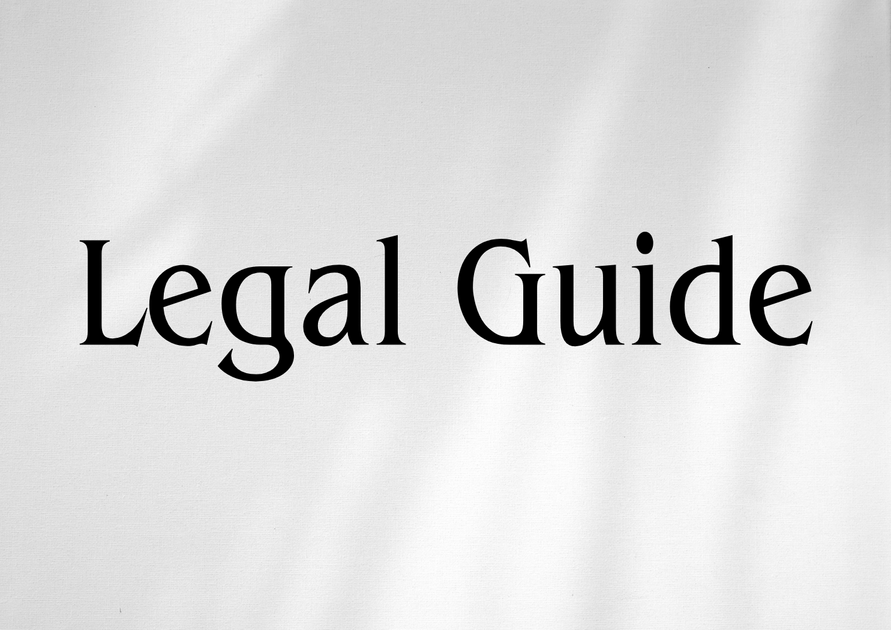Introduction: Navigating AI Safety and Legal Compliance in the UAE
The acceleration in artificial intelligence (AI) technology is transforming business landscapes across the UAE, introducing newfound efficiencies, novel solutions, and disruptive business models. This transformative era, however, brings forth complex legal, ethical, and operational challenges—chief among them, the imperative for robust AI safety standards and unwavering federal regulatory compliance. As the UAE accelerates its ambition to position itself as a global AI leader, recent regulatory updates and federal decrees have laid down clear frameworks that organizations must understand, adapt to, and implement.
For business leaders, legal practitioners, HR managers, and compliance professionals, the heightened regulatory scrutiny around AI necessitates strategic, legal, and operational recalibration. Non-compliance is no longer a mere risk—it is an inevitability waiting to happen for the unprepared, with potentially significant legal, reputational, and financial repercussions. This consultancy-grade article draws on the latest UAE legal sources to provide an exhaustive analysis of AI safety standards, their practical application, risk mitigation strategies, and effective compliance mechanisms within the federal landscape for 2025 and beyond.
Whether your organization pioneers new AI-driven products, deploys AI in HR and operations, or relies on third-party AI solutions, understanding this evolving legal environment is now a business imperative. The following guide will equip you with actionable insights, legal clarity, and a competitive edge in navigating AI safety standards and regulatory compliance under UAE law.
Table of Contents
- Overview of the UAE AI Legal Framework for 2025
- Statutory Basis: Key Laws, Decrees, and Regulations
- Detailed Provisions: AI Safety Standards in UAE Federal Law
- Comparative Overview: Old Versus New Legal Standards
- Real-World Implications: Case Studies and Hypotheticals
- Risks of Non-Compliance
- Effective Compliance Strategies for Businesses
- Future Trends and Forward-Looking Recommendations
- Conclusion and Best Practice Recommendations
Overview of the UAE AI Legal Framework for 2025
The regulatory landscape on AI in the UAE has undergone significant evolution, setting the nation apart as a forerunner for responsible AI adoption globally. The government’s commitment is evident in both policy and law, including the Artificial Intelligence Strategy 2031, the recently issued Federal Decree Law No. 15 of 2023 on the Use of Artificial Intelligence, and sector-specific guidelines issued by authorities such as the Ministry of Justice and Ministry of Human Resources and Emiratisation (MOHRE).
At the heart of the federal regime lies the principle that businesses must:
- Implement robust risk assessment and governance mechanisms for AI systems
- Ensure AI systems are safe, explainable, and non-discriminatory
- Observe transparency and data protection requirements at every stage of the AI lifecycle
- Comply with ongoing monitoring, reporting, and registration obligations for certain high-risk AI systems
This framework harmonizes global AI best practices with UAE priorities, such as sovereign data protection, human-centric AI ethics, and technological competitiveness. Regulatory oversight, meanwhile, is coordinated by newly designated federal and ministerial bodies, setting out a clear path for compliance and enforcement as we enter 2025.
Statutory Basis: Key Laws, Decrees, and Regulations
Organizations operating in the UAE need a sound grasp of the statutory instruments shaping AI compliance and safety obligations. As of early 2025, several key legal documents underpin this framework:
Federal Decree Law No. 15 of 2023 on Artificial Intelligence Use
The core of the UAE’s approach is encapsulated in this law, published in the UAE Federal Legal Gazette and available from the Ministry of Justice. The Decree Law establishes:
- Definitions and classification of AI systems, including high-risk AI
- Roles and responsibilities for AI developers, operators, and deployers
- Mandatory safety and testing protocols
- Obligatory impact assessments and transparency measures
- Penalties for breaches, ranging from fines to operational suspensions
Reference: UAE Ministry of Justice
Cabinet Resolution No. 7 of 2024 on AI Risk Management and Registration
This Cabinet Resolution assigns authority to a new regulatory body for AI oversight, prescribes technical and procedural standards for AI system registration, ongoing monitoring, and compliance reporting. It also articulates sector-specific requirements for industries such as finance, health, and HR.
Reference: UAE Government Portal
MOHRE Ministerial Guidance on AI in the Workplace (2024)
For employment and HR applications, the Ministry of Human Resources and Emiratisation has issued detailed guidelines on:
- Non-discriminatory deployment of AI-powered recruitment and assessment tools
- Safeguarding employee personal data within AI-driven systems
- Mandatory disclosures to employees regarding AI usage
Reference: MOHRE Portal
Detailed Provisions: AI Safety Standards in UAE Federal Law
1. Classification of AI Systems
Federal Decree Law No. 15 of 2023 establishes a classification for AI systems, distinguishing between:
- General-Purpose AI (intended for multiple uses)
- High-Risk AI (those impacting safety, employment, critical infrastructure, or public rights)
- Limited-Risk/Minimal-Risk AI (low consequence tools)
Regulatory requirements, including registration, impact assessments, and third-party audits, increase in line with risk level. High-risk AI mandates the strictest oversight.
2. Safety by Design and Mandatory Testing
Organizations must now integrate “safety by design” principles at the earliest stages of AI system development, ensuring:
- Pre-market safety validation and stress testing for high-impact scenarios
- Continuous monitoring for bias, unintended output, and system dysfunction
- Documented mechanisms for rapid incident reporting and mitigation
Before deployment, High-Risk AI tools must pass federally approved testing, with submissions required to the new AI Oversight Body for regulatory clearance.
3. Transparency, Explainability, and Data Handling
Article 9 of the Law requires clear disclosure to end-users when interacting with AI. Moreover, organizations must:
- Ensure decisions produced by AI can be easily traced, explained, and justified
- Adopt recordkeeping systems for all training data, test environments, and operational outcomes
- Observe Federal Law No. 45 of 2021 Regarding the Protection of Personal Data in all AI applications that process personal information
AI outputs that materially affect individual or organizational rights must be explainable to both users and regulators.
4. Registration and Ongoing Monitoring Obligations
Under Cabinet Resolution No. 7 of 2024, all High-Risk AI systems must be registered with the national AI registry, including certification of compliance and periodic re-verification:
- Annual compliance audits by approved third-party assessors
- Obligation to report and document any system failure or safety incident within 48 hours
- Provision for spot inspections and technical reviews by regulatory authorities
| Requirement | General-Purpose AI | High-Risk AI |
|---|---|---|
| Registration | Optional | Mandatory |
| Testing & Certification | Light/None | Comprehensive, Required Pre-Deployment |
| Transparency & Explainability | Recommended | Mandatory |
| Ongoing Monitoring | Basic | Detailed Logs, Annual Audits |
| Incident Reporting | Annual Report | Within 48 Hours of Incident |
5. Personnel and Governance Mechanisms
Businesses that deploy or build high-risk AI must designate a Data Protection and AI Safety Officer, responsible for:
- Overseeing AI safety protocols
- Maintaining audit trails
- Liaising with regulatory officials during audits or investigations
This role is non-delegable and must be filled by individuals whose qualifications are registered with the relevant Ministry.
Comparative Overview: Old Versus New Legal Standards
At the close of 2023, the UAE operated primarily under voluntary AI governance frameworks, with sectoral best-practices and limited binding regulation. With the advent of Federal Decree Law No. 15 of 2023 and its implementing regulations, the federal approach has pivoted sharply toward robust, mandatory, enforceable compliance.
| Area | Pre-2023 | 2024-2025 Update |
|---|---|---|
| Legal Basis | Soft Law/Voluntary Codes | Mandatory Federal Decree and Cabinet Resolutions |
| AI System Registration | Not required | Mandatory for High-Risk AI |
| Safety Testing | Informal/Optional | Mandatory Pre-Deployment for High-Risk |
| Transparency | Encouraged | Explicitly Required |
| Sanctions & Penalties | Minimal/None | Fines, Suspension, Blacklisting |
Real-World Implications: Case Studies and Hypotheticals
Case Study 1: AI in Recruitment (High-Risk HR Applications)
Scenario: A Dubai-based recruitment firm implements a machine-learning algorithm for resume shortlisting. The system, developed by a third-party vendor, identifies candidates by matching key skill phrases—yet an internal audit reveals the AI disproportionately eliminates applicants from certain backgrounds.
Legal Analysis: Under MOHRE Guidance and Federal Decree Law No. 15 of 2023, such an application qualifies as High-Risk AI due to its impact on employment rights. The failure to audit, correct, and document bias exposes the firm to:
- Fines of up to AED 2 million under Cabinet Resolution No. 7 of 2024
- Mandatory remediation orders (including revamping or suspending use of the AI tool)
- Potential civil liability for discriminatory outcomes
Remedy & Best Practice: Organizations must conduct pre-deployment audits, document validation methodologies, and produce explainable AI outcomes as a matter of compliance.
Case Study 2: AI in Healthcare Operations
Scenario: A hospital deploys AI-driven tools to automate patient triage. An algorithmic error leads to an incorrect medical classification, resulting in harm to a patient and subsequent legal claims.
Legal Analysis: Medical AI systems are classified as High-Risk. Failure to obtain prior certification, skip safety testing, or delay incident reporting can trigger heavy penalties, reputational harm, and even license suspension by health regulators.
Remedy & Best Practice: Hospitals must ensure all critical AI tools are registered, tested, and monitored according to the safety standards. Full incident documentation and immediate reporting are mandatory.
Hypothetical: AI Vendor Liability
Suppose a software house delivers a commercial AI product to a UAE government agency, which is subsequently found non-compliant with the required testing and reporting obligations. Both the vendor and the government entity may face joint liability under UAE law, emphasizing the importance of contractually embedding compliance and warranty clauses in all AI procurement and deployment agreements.
Risks of Non-Compliance
The new legal landscape prioritizes accountability and enforces compliance through stringent penalties. Key risks for businesses include:
- Financial Penalties: Fines ranging from AED 100,000 to AED 5 million for serious infractions
- Operational Sanctions: Suspension of AI systems, removal from AI registries, and business license revocation
- Civil & Employment Claims: Claims from affected individuals or classes (especially in HR, healthcare, and consumer-facing AI)
- Reputational Harm: Public disclosure of breaches, blacklisting, and lasting brand damage
- Personal Liability: For named Data Protection and AI Safety Officers who fail in their prescribed duties
| Type of Non-Compliance | Penalty Range (AED) | Additional Sanctions |
|---|---|---|
| Failure to Register High-Risk AI | 100,000–1,000,000 | Cease and Desist Orders |
| Lack of Safety Testing | 200,000–2,000,000 | System Suspension |
| Data Breach via AI | 250,000–5,000,000 | Possible Criminal Investigation |
| Non-Transparent Decision-Making | 100,000–500,000 | Mandatory Remediation |
Effective Compliance Strategies for Businesses
Staying ahead of regulatory requirements demands an integrated, enterprise-wide approach. Legal consultancy best practices recommend:
1. Conducting AI Impact and Risk Assessments
Regularly audit all AI systems against federal definitions of risk. Maintain up-to-date inventories and map each system to its risk classification, ensuring audits are documented with findings reviewed by senior executives.
2. Building a Comprehensive AI Compliance Checklist
Implement a tailored compliance checklist, such as:
- AI system registered and logged with relevant authority
- Pre-market and ongoing safety validation passed
- Transparency measures (explainability and user notification) operational
- Incident response plan and reporting protocols in place
- Data protection (alignment with Federal Law No. 45 of 2021) assured
3. Training and Capacity Building
Deliver regular compliance training for all personnel engaging with high-risk AI, ensuring legal risks, obligations, and incident protocols are clearly understood. Designate and empower the Data Protection and AI Safety Officer role.
4. Contractual Safeguards with Vendors
Embed compliance warranties, audit rights, and liability clauses in all AI procurement and implementation contracts. Require vendors to provide evidence of safety testing, registration, and ongoing monitoring certification.
5. Proactive Engagement with Regulators
Engage early and regularly with federal and sectoral regulators, seeking clarification where regulations are complex or evolving. Timely self-reporting of incidents may mitigate penalties.
Suggested Visual: AI Compliance Process Flow Diagram
- Step 1: Identify and Classify AI Systems
- Step 2: Conduct Impact and Safety Assessment
- Step 3: Register High-Risk AI
- Step 4: Implement Monitoring Mechanisms
- Step 5: Report and Remediate Incidents
Future Trends and Forward-Looking Recommendations
AI governance in the UAE will continue to evolve rapidly. Key developments on the horizon include:
- Expansion of risk categories to cover emerging AI technologies
- Introduction of sector-specific amendments for finance, insurance, and public sector AI systems
- International interoperability initiatives to streamline cross-border compliance
It is anticipated that enforcement measures will grow more assertive in the coming years, driven by greater regulatory oversight and increasing numbers of public complaints. Businesses must not only monitor legal updates but also develop the agility to adapt compliance programs as new guidance emerges.
Conclusion and Best Practice Recommendations
The regulatory landscape for AI in the UAE is now firmly established on an enforceable, risk-based foundation. Federal Decree Law No. 15 of 2023 and its associated Cabinet and Ministerial guidance crystallize the new compliance imperative for every organization operating in, or with, the UAE. The stakes are high: non-compliance exposes organizations to severe penalties, business disruption, and reputational damage, while strategic compliance delivers operational risk mitigation, regulatory goodwill, and long-term competitive advantage.
In summary:
- The UAE’s AI legal framework is now mandatory, specific, and enforced across sectors
- Obligations vary by risk profile but are most rigorous for high-risk applications
- Comprehensive compliance programs, vigilant monitoring, and constant regulatory engagement are now essential business functions
By embedding AI safety standards and legal compliance at the core of business strategy, UAE organizations will not only navigate the regulatory landscape of 2025, but thrive within it, building sustainable trust and innovation into every facet of their AI journey.




